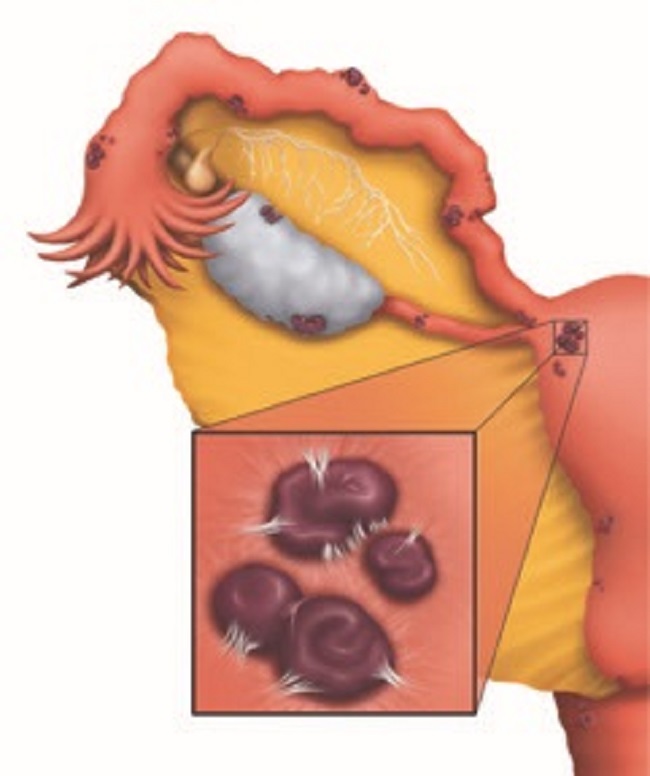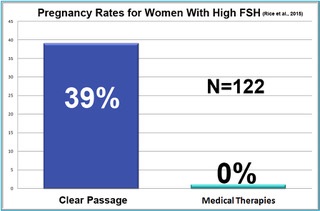I was diagnosed with stage 4 endometriosis in 1996. In 2017, I was ready for a hysterectomy. I had two children and was finished with childbirth. I was having a lot of pain on my left side where my ovary was located. My Veterans Administration GYN refused to do a hysterectomy without first giving me Lupron shots assuming that my pain was due to the endometriosis. I was trying to hold down a very demanding government job and missing a lot of work from the pain. I had two laparoscopic surgeries in 1996 and 2001, respectively. Both were to excise the endometriosis. At the time, I was required to take Lupron in order to have a hysterectomy, I was 46 years old. I was denied a hysterectomy after my son was born in 2000 because I was considered too young at 30 years old to have a hysterectomy.
Endometriosis in the Colon and Lupron
After the injections of Lupron, a colonoscopy confirmed a diverticula pocket in that spot that was painful and others on my large intestine. The laparoscopy and excision in 1996 confirmed that my endometriosis extended to my large intestine. The colonoscopy found that I have so many pockets of diverticulosis, a resection surgery was not possible. Basically, if I were to become septic due to an endometriosis/diverticulosis flare, they would need to remove all of my large intestine. My options were very limited. My GYN wouldn’t perform a hysterectomy and laparoscopy under the assumption that the pain I was having was due to endometriosis. He convinced me to start the shots to see if they would help the pain because he assumed the pain was due to endo. I didn’t research the Lupron injections much prior to receiving them. I fully trusted my GYN. He mentioned hot flashes and suppression of symptoms with estradiol.
Immediately I noticed a difference. I don’t take prescription drugs of any kind unless I am really sick. I had nothing for any preexisting conditions. I could not tolerate the injections and function at work. I had severe hot flashes every few seconds 24/7 for three months even with add back estradiol. Worse, the estradiol made my migraines flare and so I was a hot mess. After stopping estradiol, my migraines continued to flare and still do without supplementation. I was also having diverticulosis flares every month sometimes twice a month. I had terrible gas and severe IBS symptoms. My work leave, FMLA and advanced sick leave were dwindling from all the visits to the various doctors. Within three months of my last Lupron injection, I was forced to retire or be fired for not being able to work. I never fully recovered from the Lupron.
Finally, a Hysterectomy
My GYN finally agreed to the hysterectomy in 2018 where they found my left ovary and left fallopian tube in one mass of adhesion scarring with my large intestine. The GYN removed the left polycystic ovary, left and right fallopian tubes along with my uterus, which had fibroids, and cervix leaving me with just my right ovary. Prior to the hysterectomy, I began noticing some numbness and cramping or burning in my feet at work that was much worse at night. I had the same kind of cramping and burning in my lower back too. I would later learn that these are symptoms of thiamine deficiency. Trying to keep it together at work with all of this was a nightmare.
Around this time, I also began having severe nausea and pain in my stomach. The GI doctors did an upper GI scope to confirm duodenal ulcers. The digestive issues, especially the diverticulosis should disqualify anyone from having Lupron as Lupron causes major digestive upset according to the FDA fact sheet. My digestive tract was inflamed from mouth to anus post Lupron. I had an inflamed esophagus and ulcers, diverticulosis flares, IBS with constipation and diarrhea and hemorrhoids that I couldn’t heal with meds. The low FODMAP diet helped though.
No More Pharmaceuticals
In 2019, I finally stopped taking all pharmaceuticals. No pharmaceutical made me feel better. Every medication I took for GI issues and neuropathy made me worse. I only took one for one or two weeks at a time to log all my side effects from each so I could have them added to my growing list of allergic reactions. I did have some sensitivity issues with prescription drugs prior to Lupron, just not as bad. I have the MC1R redhead gene. Redheads are more sensitive to pharmaceuticals and have more adverse reactions. I struggle with topical solutions as well. I couldn’t use estradiol patches because I’m allergic to the adhesive. Thankfully, my primary care physician also has endometriosis and suggested herbal supplements and remedies. All of this ,surprisingly, is from the veteran’s hospital. I was ordered by her to stop working. This was a final attempt to heal my ulcers, as they would eventually kill me if I could not find relief.
How I Healed Myself With Thiamine and Diet
I decided to try high dose thiamine after researching it via Drs. Lonsdale and Marrs and Elliot Overton. I started with 100mg daily for 6 months. Then 500mg for 3 months and currently 1000mg (500mg 2x daily). The thiamine works as well as the acupuncture with EMS. I also take Alpha Lipoic Acid and Dandelion root daily. The increases in thiamine are proving to be a significant factor in recovery. If I miss one day of supplements I’m sick for several days so I’m convinced that it is working.
To help myself heal, I no longer work a 9 to 5 job. I follow a low FODMAP diet with modification for diverticulosis and supplement with elderberry or dandelion for inflammation and immunity, turmeric, prebiotic + probiotics, magnesium for bone loss, palpations, anxiety, alpha lipoic acid for neuropathy, high dose thiamine for neuropathy, fatigue anxiety and brain fog, b vitamins and D3+K2 for b1 uptake regulation and delta 8 CBD for fibromyalgia pain and fatigue. I have regular chiropractor adjustments of my neck and lower back. Acupuncture and light therapy on my feet helped with the burning and cramping.
Where I Am Now
Currently, I have no endometriosis pain, only some lingering PMDD. I have no ovarian cysts and the migraines are not as frequent. Now only a couple a month versus weekly. I still have some burning and cramping in my legs and feet, but it is tolerable. Before thiamine, I was bedridden. The back and neck pain I had previously has improved with thiamine along with physical therapy/yoga and regular chiropractic care. I no longer experience diverticulosis flares with the new diet and supplements for inflammation like dandelion root, turmeric, and elderberry. I switch out the dandelion and elderberry because they work about the same. Depends on what is on sale.
I am able to stand for longer periods of time. My anxiety is significantly reduced, my palpations are gone, I can remember things, and my ADHD flare ups are minimal. In 2022, I only had two mild diverticulosis flares. Prior to the diet changes and supplements, I was having them once a month. I went from being bedridden completely to cooking (I still need to sit some), cleaning with short breaks, gardening with a sit on garden cart, and walking about a half mile every few days. I still have numbness in both feet. I am hopeful that lowering my A1C will resolve this. It may be permanent. Only time will tell. I’m going to the VA this week for a checkup and requesting more PT to see if it will help. They did an EMP on both legs with normal results. That was pretty painful but I felt nothing in my 3 little toes on both feet. Overall, I am doing much better with the higher dose thiamine and have much more energy.
We Need Your Help
More people than ever are reading Hormones Matter, a testament to the need for independent voices in health and medicine. We are not funded and accept limited advertising. Unlike many health sites, we don’t force you to purchase a subscription. We believe health information should be open to all. If you read Hormones Matter, like it, please help support it. Contribute now.
Yes, I would like to support Hormones Matter.
Photo by Erol Ahmed on Unsplash.








































 One of the biggest surprises in the ten-year study was in women who were diagnosed hormonally infertile due to high FSH (follicle-stimulating hormone). As a woman approaches menopause, her ovaries demand more and more FSH to stimulate egg growth in older follicles. Measured early in the menstrual cycle, most physicians feel a woman’s FSH levels should be at or below 10 mIU/mL. When a woman’s FSH is above 10, she is considered unlikely to conceive. At FSH of 25, the woman is generally considered to be menopausal.
One of the biggest surprises in the ten-year study was in women who were diagnosed hormonally infertile due to high FSH (follicle-stimulating hormone). As a woman approaches menopause, her ovaries demand more and more FSH to stimulate egg growth in older follicles. Measured early in the menstrual cycle, most physicians feel a woman’s FSH levels should be at or below 10 mIU/mL. When a woman’s FSH is above 10, she is considered unlikely to conceive. At FSH of 25, the woman is generally considered to be menopausal.


